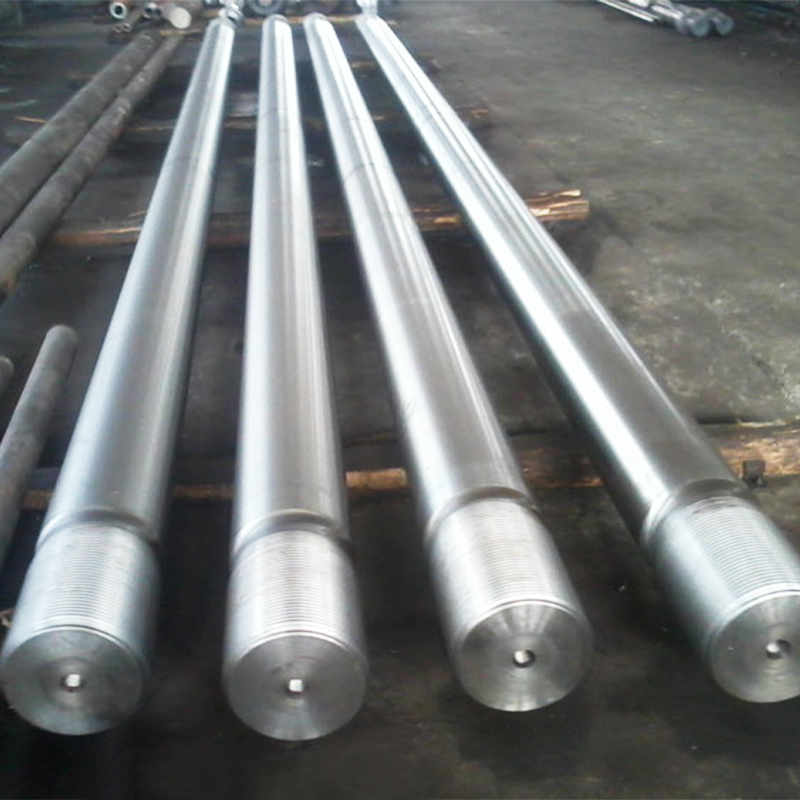
Performance Under High Temperatures
Enhanced Strength and Toughness: Forged material bars are renowned for their superior strength and toughness, a direct benefit of the forging process. During forging, materials undergo significant deformation, which aligns the grain structure in a way that enhances their mechanical properties. This refined grain flow imparts exceptional resistance to thermal stresses and deformation. As a result, forged bars exhibit remarkable strength and impact resistance, which is crucial for maintaining structural integrity under elevated temperatures.
Thermal Stability: Forged bars, particularly those manufactured from high-alloy steels or advanced nickel-based superalloys, are engineered to withstand extreme temperatures. The forging process imparts a uniform microstructure that contributes to the material’s ability to retain its mechanical properties even at high temperatures. This thermal stability ensures that the forged bars do not suffer from significant reductions in strength or hardness when exposed to elevated temperatures, making them suitable for high-temperature applications such as aerospace, power generation, and petrochemical industries.
Fatigue Resistance: One of the critical advantages of forged material bars is their enhanced fatigue resistance. The forging process reduces porosity and internal defects, resulting in a more homogeneous material with improved fatigue properties. This is particularly beneficial in high-temperature applications where materials are subjected to cyclic loading. The superior fatigue resistance helps in preventing premature failure and extends the service life of components subjected to repeated thermal and mechanical stresses.
Heat Treatment Compatibility: Forged material bars can be subjected to various heat treatment processes to further optimize their performance at elevated temperatures. Techniques such as annealing, tempering, and quenching can be employed to tailor the material’s hardness, strength, and ductility to specific application requirements. These heat treatments enhance the material's ability to perform reliably in high-temperature environments, ensuring that forged bars meet stringent performance criteria.
Performance in Corrosive Environments
Material Selection: The choice of material is paramount when addressing corrosive environments. Forged material bars can be made from alloys specifically designed for corrosion resistance, such as stainless steels, Inconel, or other specialized superalloys. These materials possess intrinsic properties that resist oxidation, rust, and other forms of chemical degradation, ensuring that the forged bars maintain their integrity and functionality even in harsh conditions.
Surface Integrity: Forging results in a denser and more uniform microstructure compared to casting or extrusion methods. The reduction in surface defects, such as voids and inclusions, minimizes the risk of localized corrosion. The enhanced surface integrity of forged bars means they are less susceptible to pitting, crevice corrosion, and other forms of surface degradation, providing better long-term performance in corrosive environments.
Protective Coatings: To further enhance corrosion resistance, forged material bars can be treated with protective coatings. Techniques such as galvanization, painting, and anodizing create a protective layer that shields the material from corrosive agents. These coatings serve as an additional defense mechanism, preventing direct contact between the corrosive environment and the underlying material, thereby extending the life of the forged bars.
Resistance to Chemical Attack: Certain forged material bars are engineered to withstand aggressive chemical environments. For example, high-grade alloys can resist attack from acids, bases, and salts commonly found in industrial and chemical processing applications. The inherent resistance of these alloys to chemical attack ensures that the forged bars remain functional and reliable in environments where other materials might fail.




 English
English русский
русский Español
Español عربى
عربى



